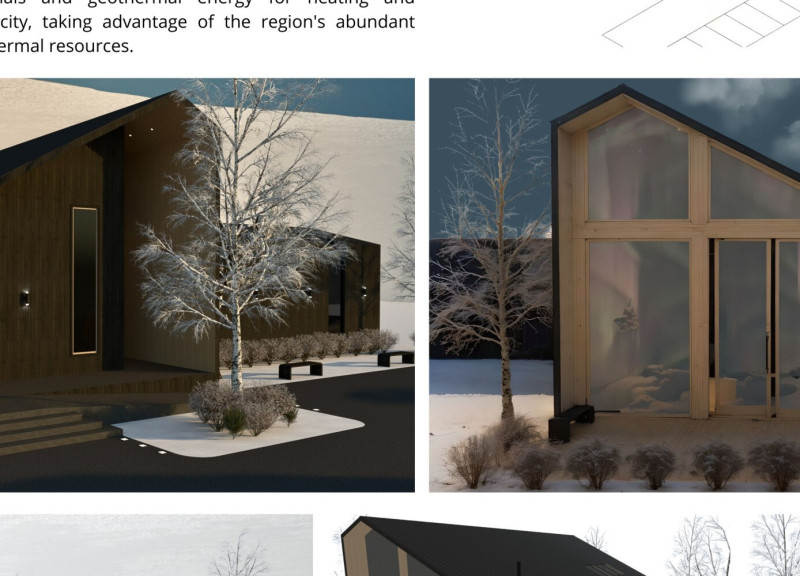5 key facts about this project
This architecture project is designed to accommodate [insert specific functions, such as residential living, commercial activities, or public services], reinforcing its role as a vital component of the community. The layout facilitates a seamless flow between different areas, inviting interaction and engagement among users. Strategic placement of windows and open spaces ensures that natural light permeates throughout the building, enhancing both aesthetic appeal and energy efficiency. The design promotes a sense of openness while balancing privacy needs, allowing users to experience comfort in their surroundings.
Key architectural elements showcase meticulous attention to detail. The facade features a combination of [describe materials used, e.g., wood cladding, steel panels, or brickwork], each chosen for its durability and contribution to the overall visual narrative. These materials not only fulfill structural requirements but also help to establish a dialogue with the environment, reflecting local character and tradition. The interplay of textures is evident in the thoughtful juxtaposition of smooth and rough surfaces, which adds depth and interest to the design.
A unique approach in this project is the integration of green design principles, which emphasizes sustainability without sacrificing style. Renewable materials have been thoughtfully sourced, and passive design techniques are employed to reduce energy consumption. The inclusion of green roofs, rain gardens, or even integrated solar panels signals a commitment to sustainable practices while also enhancing biodiversity within urban settings. This consideration for the environment contributes to the long-term viability of the building and promotes a healthy lifestyle for its occupants.
The spatial organization within the building further reflects innovative design thinking. Flexible spaces are planned to adapt to varied uses, making it possible for the project to evolve along with the community’s needs. This adaptability is particularly important in contemporary architecture, where user-centric design plays a pivotal role in ensuring functionality over time. Spaces are configured to encourage social interactions and collaborations, fostering a sense of community and a richer user experience.
Detailing is another important aspect of the project that deserves attention. From custom-made fixtures to thoughtfully designed entryways, every feature contributes to the overall coherence of the architectural narrative. Careful consideration has been given to lighting—both natural and artificial—enabling a dynamic ambiance that varies throughout the day, enhancing the overall atmosphere of the building.
The project not only fulfills its immediate requirements but also exemplifies forward-thinking architectural ideas. It addresses current challenges within urban development, focusing on creating spaces that are inclusive, resilient, and adaptable to change. As potential visitors or users engage with the space, they can appreciate the conscious efforts made at each stage of the design process.
Exploring the architectural plans, sections, and various design elements will provide further insights into the architectural details and thoughtful strategies implemented throughout the project. For those interested in understanding how this project interacts with its environment and responds to contemporary architectural challenges, a deeper dive into the architectural designs and ideas will reveal the extensive planning and vision that define this compelling architectural endeavor.


























